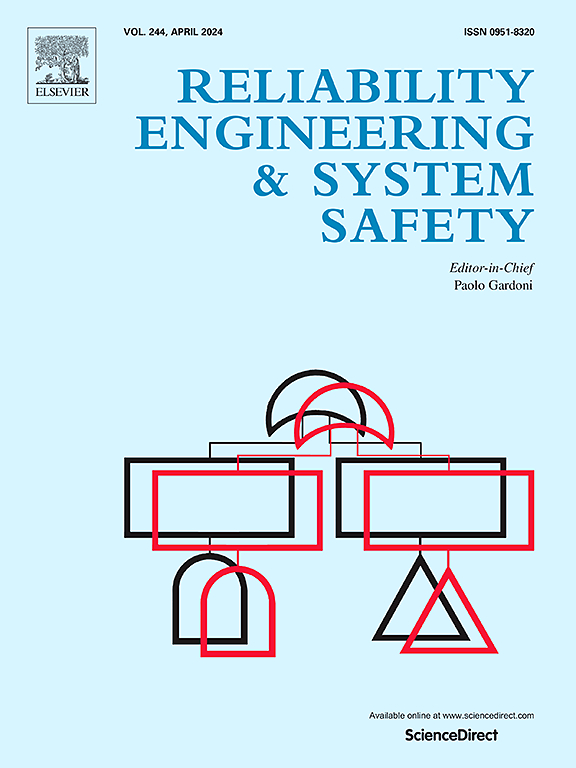A credible interval model updating method for structural population analysis and design stages based on small samples
IF 9.4
1区 工程技术
Q1 ENGINEERING, INDUSTRIAL
引用次数: 0
Abstract
In practical engineering, a persistent discrepancy exists between numerical simulations and real responses. This gap significantly undermines reliability in the established models and spurs the development of model updating. Yet, during the structural analysis and design phases, the focus of model updating often extends beyond the current structure to encompass the same type of structural population, so this paper proposes a credible interval model updating method for addressing the issue of uncertain model updating. This method divides the uncertain model updating problem into two subgoals: ensuring that the experimental responses credibly describe the real responses and that the simulation responses accurately fit experimental responses. For the first subgoal, the non-probabilistic credible convex sets for multi-type responses are established by introducing the concepts of multidimensional response space and credibility level. For the second subgoal, this paper categorizes model parameters into uncertain parameters and updating parameters, allowing the simulation model to fully consider prior information and be more generally applicable to the uncertain conditions of structural population. Particularly, the comparison between the predictions of the updated model and experimental results from other operating conditions highlights the robustness of the updated model and the advancement of the methodology.
在实际工程中,数值模拟与实际响应之间始终存在差距。这种差距极大地削弱了既定模型的可靠性,并推动了模型更新的发展。然而,在结构分析和设计阶段,模型更新的重点往往超出当前结构,而涵盖同类型的结构群,因此本文提出了一种可信区间模型更新方法,以解决不确定模型更新的问题。该方法将不确定模型更新问题分为两个子目标:确保实验响应可信地描述真实响应和模拟响应准确地拟合实验响应。对于第一个子目标,通过引入多维响应空间和可信度的概念,建立了多类型响应的非概率可信凸集。针对第二个子目标,本文将模型参数分为不确定参数和更新参数,使仿真模型能够充分考虑先验信息,更普遍地适用于结构群体的不确定条件。特别是,更新模型的预测结果与其他运行条件下的实验结果之间的对比,凸显了更新模型的稳健性和方法论的先进性。
本文章由计算机程序翻译,如有差异,请以英文原文为准。
求助全文
约1分钟内获得全文
求助全文
来源期刊

Reliability Engineering & System Safety
管理科学-工程:工业
CiteScore
15.20
自引率
39.50%
发文量
621
审稿时长
67 days
期刊介绍:
Elsevier publishes Reliability Engineering & System Safety in association with the European Safety and Reliability Association and the Safety Engineering and Risk Analysis Division. The international journal is devoted to developing and applying methods to enhance the safety and reliability of complex technological systems, like nuclear power plants, chemical plants, hazardous waste facilities, space systems, offshore and maritime systems, transportation systems, constructed infrastructure, and manufacturing plants. The journal normally publishes only articles that involve the analysis of substantive problems related to the reliability of complex systems or present techniques and/or theoretical results that have a discernable relationship to the solution of such problems. An important aim is to balance academic material and practical applications.
 求助内容:
求助内容: 应助结果提醒方式:
应助结果提醒方式:


